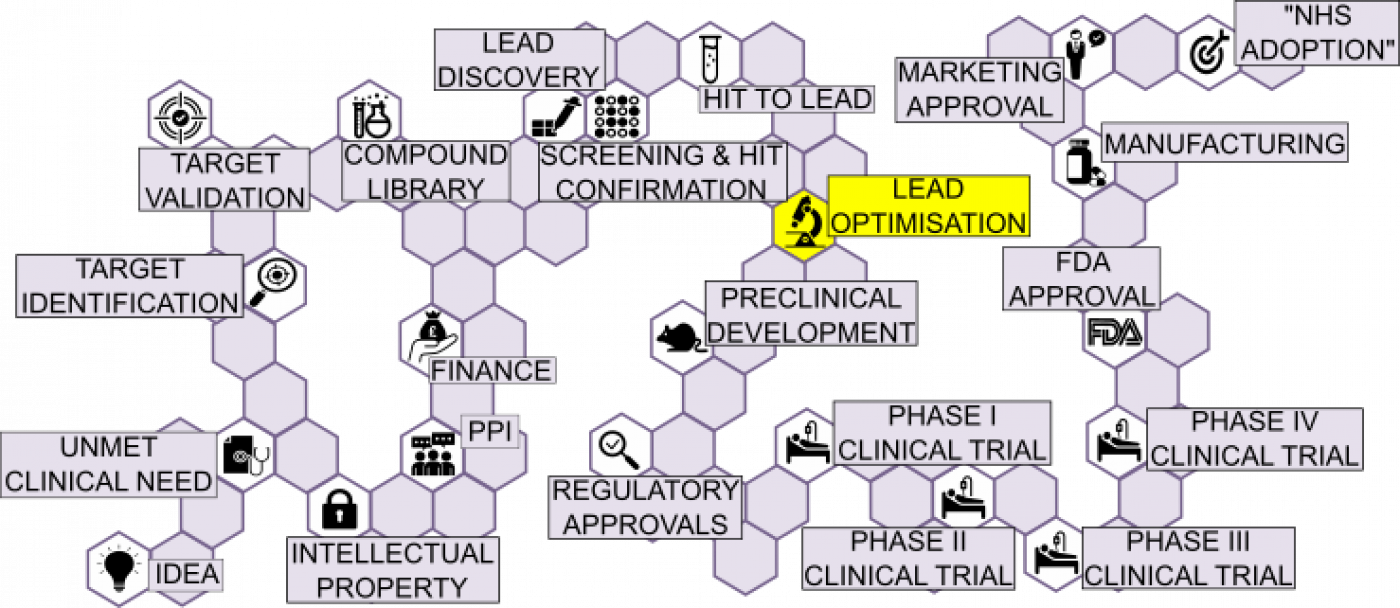During this phase of drug discovery, the aim is to enhance the lead compounds by making closely related compounds and evaluating their effects on in vitro systems on various biological properties.

 LEAD OPTIMISATION:
LEAD OPTIMISATION:
The aim in lead optimisation, is to improve biological activity, target selectivity, potential for toxicity. Finally the compounds will be evaluated for how they are absorbed, distributed, metabolised and eliminated when dosed in an animal model of disease. Additionally the efficacy of the compound to modulate the disease will be evaluated in the animal model.
Physiocochemical - Control of physicochemical properties of the lead compounds is essential to speed the identification of potential drug candidates. Compounds within the below ranges have an improved likelihood of being orally absorbed and hence increasing the chances of successfully identifying a drug molecule. The Lipinski rule is;
- Its molecular mass is less than 500 daltons
- Its logP, which is a measure of lipophilicity, is less than 5
- The number of hydrogen bond donors is less than 5
- The number of hydrogen bond acceptors is less than 10
In vitro Adsorption, Distribution, Metabolism and Excretion (ADME) properties of compounds - These include permeability assessment in different cell lines such as colon carcinoma (Caco-2) cell line as a model for intestinal absorption, metabolic stability assessment using human liver microsomes as a predictor of how likely the molecule is to be removed by normal metabolic processes, and plasma protein binding assay which helps to understand key effects which drive drug potency in vivo.
Solubility - Compounds should have sufficient solubility to enable easy formulation for future clinical studies. In addition to which, poor solubility makes evaluation of test compounds in vitro and in vivo models of disease difficult.
Toxicity potential - This must be checked in the early stage of drug discovery. Therefore many in vitro assays have been developed to be use to measure the toxicity of a compound, many of which use human cell lines.
Pharmacokinetics - Used evaluate how well an animal (as a model for human) might deal with a potential drug molecule. If the compound is poorly absorbed, highly metabolised or very difficult to formulate for evaluation it is unlikely to be a good candidate for testing in humans. Finally, the compound is screened in animal models of human disease for its efficacy.
UCL Support:
The UCL Translational Research Office Drug Discovery Group (TRO DDG) has extensive experience of guiding projects through lead optimisation to preclinical candidate selection.
The DDG can offer expert advice, a base for the drug discovery team or manage out-sourced projects on behalf of researchers at this stage of drug discovery.
 Close
Close

